2024 Guide To Backpacking Havasupai
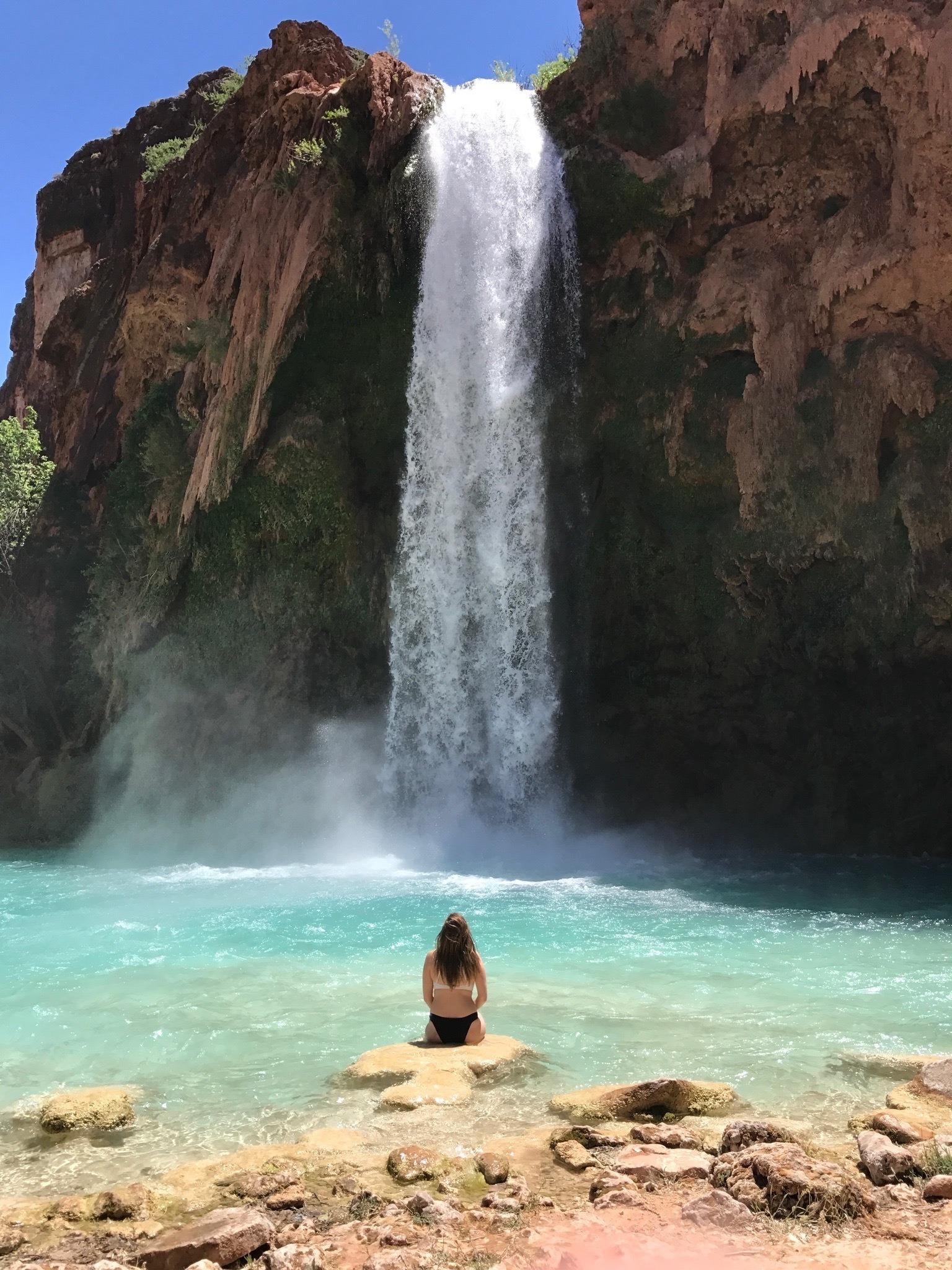
Where is Havasupai?
Havasupai is located near in Coconino County, at the southwest corner of the Grand Canyon, and near the village of Supai, Arizona. The ‘Havasu’ in ‘Havasupai’ means “blue-green water” and ‘Pai’ means “people” – so “The People of Blue-Green Water.”
Supai is the village you need to cross through to reach the waterfalls and campgrounds. It is located about ~2 miles from the campground. The village is home to a few hundred people, who accommodate tourists every week as they travel to reach the waterfalls and campgrounds. The village relies on tourism as their main source of income. It is the only occupied settlement in the Grand Canyon (however, it is not part of Grand Canyon National Park).
Supai has its own post office, school, lodge, convenient store, and police station. There are no roads and all the supplies for the village is either carried down into the town by pack mules or via helicopter. Because of how remote Supai is, it is not a good idea to plan on stocking up on food and gear in town as everything is super expensive.
Fun fact: Supai is the only place left in the United States where mail is carried in and out by mule. Stop by the post office while you’re there and mail a postcard from it. It’ll get a “delivered by mule” logo!
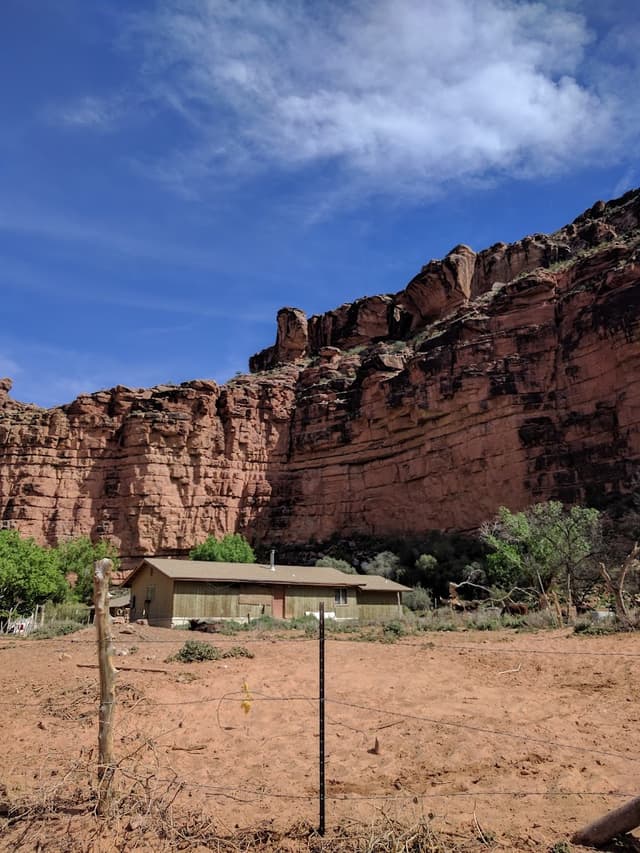
How To Get To Havasupai
Depending on where you live, you could drive to the trailhead. When I did the hike, I drove from Los Angeles and it took about 8 hours.
If you aren’t within driving distance, I’d recommend flying into Harry Reid International Airport (LAS) and renting a car. From there, it is about a 3 1/2 hour drive to the Hualapai Hilltop Parking lot where the hike starts. I pinned the address below, but the parking lot is located at the end of Indian Road 18. Parking here is free. Simply leave your car in the lot until you return. Be careful as you drive to the lot, especially if you’re driving in the dark, as there’s a lot of wildlife on the side of the road.
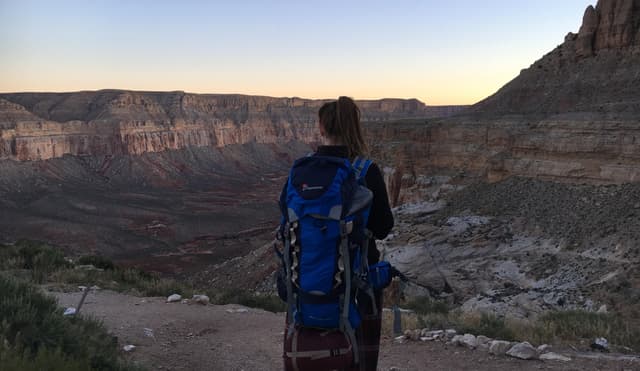
Hike:
The best way to get to Havasupai from the Hualapai Hilltop Parking lot is to hike. However in 2023, the tribe banned sleeping in your car overnight at the trailhead. Because of that, I recommend stay the night before at a nearby hotel (options listed below), and waking up before sunrise and finishing the drive to the parking lot.
Hotel Options:
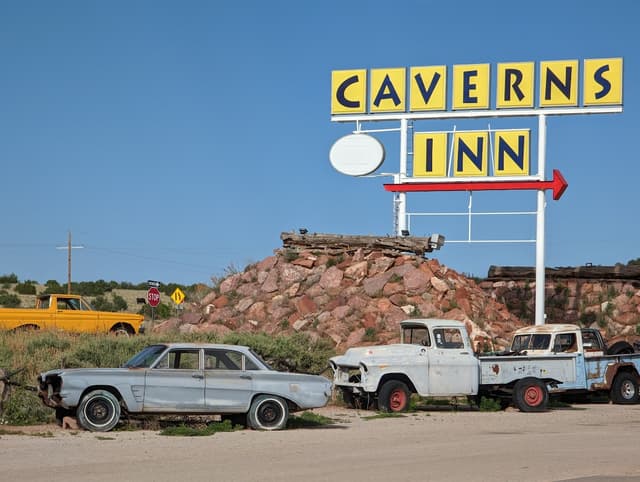

Helicopter:
If you don’t want to hike, you could take a helicopter there and back, or you could hike one way and take the helicopter the other way to lessen the amount of hiking. Some people also opt to hike both ways but use the helicopter to carry their pack. Airwest Helicopters is the company that provides transportation services to Havasupai. They only operate certain times of the week and year. There are no pre-planned reservations for the helicopter. Simply sign up at the helipad at the Hualapai Hilltop or in the village of Supai on the Air West sign-up sheet. If you have any questions, you can visit their website below or call them at 623-516-2790.
Mules:
There is the option to use mules to carry your gear in and out of the canyon, however I highly recommend against this. There have been numerous reports over the years of animal abuse to the mules, including the animals being overworked in extreme heat.
If you want to educate yourself on why you should not use the mules to carry your pack, you can Google 'Havasupai Mule Abuse' and you'll find several articles about this.
Note: There is a checkpoint 5-miles from the Hualapai Hilltop Parking lot where you’ll need to show proof of a reservation. I did not experience this because I arrived so late in the evening when I did the hike, but it is possible you may need to show your reservation information depending on what time you arrive.
Permits, Campground, & Lodge Information
In order to go to Havasupai, you’ll need a permit. And don’t try to get around it and just show up! There’s a checkpoint once you get to the village where you’ll have to provide your ID.
2024 is the first year the Havasupai tribe implemented a registration pre-sale. The pre-sale allows for tourists to purchase a limited number of permit reservations in advance of the public on-sale date. The presale period opens at 8 a.m. Arizona time on January 5, 2024 and closes at 5 p.m. on January 18, 2024. Once the pre-sale is closed, a randomized process will then assign reservation dates among tourists who have purchases a pre-sale entry. You can apply for the pre-sale reservation at the link below. You’ll need to pay a $15 non-refundable fee to apply.
The remaining permits will become available to the general public for purchase on February 1, 2024, beginning at 8 a.m. Arizona time. However, getting a general public permit is extremely competitive so you’ll want to attempt to get one right at 8 a.m. when they go on sale.
The pricing for permits and campgrounds, which is set by the tribe, has gone up significantly over the last few years. The 2024 rates are:
- $455 per person for a campground permit, 3 nights.
- $2,277 per lodge room – up to four people, 3 nights.
There is also a $110.00 entrance/ environmental fee charged per person.
Campground reservations are available from February 1 - November 30, 2024. Lodge reservations are available from April 1 - November 30, 2024 (see link below).
Important: You do not select a campground when you reserve. The campground runs for over a mile on both sides of Havasu Creek between Havasu Falls and Mooney Falls. You won’t receive an assigned campsite, so you basically just set up camp anywhere you like as long as it is safe and respectful of the environment.
You can find a list of FAQ below, or reach out via email with any additional questions you have at: info@havasupaireservations.com.
They’re also very active on their official Facebook page and post a lot of updates throughout the season as well so I recommend checking it out.
Check-In
Since 2023, you now need to officially check in for the Havasupai hike at the Grand Canyon Caverns Inn, which is the closest place to stay nearest the hilltop parking lot. The Grand Canyon Caverns Inn is located at Mile Marker 115, Route 66 near Seligman, Arizona. Your trip leader must check your group in.
The check-in office is open every day from 8am-5pm. Once you check-in you’ll receive all permits, wristbands, bag tags, and an entrance form which will need to be completed and shown to the Havasupai Reservation boundary checkpoint staff and/or the Tourist Office employee stationed at Hilltop.
The Hike
Hike Overview:
- Length: ~20 miles out-and-back
- Elevation Gain: 2,150 feet (you’ll hit most of this on your way back to the parking lot at the very end of the hike).
- Cell Service: Very spotty service once you are in Supai
- Difficulty: Moderate to hard, depending on your hiking experience
To be completely honest, the hike in isn’t that bad! There’s very little elevation gain on the way in, and each turn gives you a new, beautiful view of the canyon. By the time I reached the campground, my back and shoulders hurt from carrying my backpack, but overall I was feeling pretty good! The hike back, however, is tough!
The hike starts at the Hualapai Hilltop Parking lot. There are not many utilities here. There’s no public water, no electricity, and no cell service. However, there are composting bathrooms.
The view from the parking lot is stunning, especially in the morning when the sun is rising, which is when I recommend you start the hike so you can avoid the heat as much as possible. The tribal staff will not let you begin your hike at the parking lot after 2:00pm. They will turn you away if you try to pass through the checkpoint after 2:00pm.
The parking lot is more than 1,000 feet above the valley floor. Your hike starts by descending down the two-miles of winding switchbacks to the floor. Be on the lookout for mules and horses! They have the right-of-way and won’t stop to wait for you to move to the other side. When I did the hike, we got stuck behind a bunch of wild horses and had to wait about 30-minutes until we could continue on.
Once you reach the floor, the trail is very simple and easy to follow. Simply continue on into the canyon following the wash. As you go deeper in, the views get even more amazing. The red canyon walls become more narrow as you go along, towering hundreds of feet above you. At mile 7 the trail gets more shady, thanks to the narrow walls, which helps keep the temperature low. Eventually you’ll reach the end of the slot section and you’ll see Havasu Creek on the right-hand side. You’ll hear the water for the first time. Once you see the water, you’re close to the town of Supai! In Supai, you’ll check-in again with the tribal staff and show your reservation information.
Supai was such an interesting place to walk through and I highly recommend taking your time as you walk through just to take it all in. The village is perhaps the most isolated village in the United States, having no cars and no paved road. The Havasupai people still cultivate their own crops and weave baskets.
I think it was just interesting to really take in the way of life here, which is so different from ours (as you can imagine). There were children playing on tree swings, as opposed to looking at an iPad or an iPhone, and families were drying their laundry on a line. With no cars and no electricity, it was quiet and peaceful. However, make sure you’re respectful and don’t go off the trail. Also, it is against rules to take any photography of the people.
Continue on and you’ll finally reach the most popular waterfall — Havasu Falls. Below Havasu Falls is the campground which stretches for a mile until you reach the next major waterfall, Mooney Falls. The next waterfall after that, which is also the least visited waterfall, is Beaver Falls.
Between Havasu Falls and Mooney Falls is where you’ll want to select a campsite. You will not have a reserved spot, so just select one anywhere you like as long as it is safe and respectful to the environment and other campers. It does rain often here, so you may want to try and grab a spot underneath a tree for extra protection just incase.
There are 4 well-maintained bathrooms near the camping area, as well as a water spiget at the front where you can refill your water.
The 5 Waterfalls
So why is the color of the water that blue? The reason is because of high levels of dissolved magnesium and calcium coming from underground springs. As the water comes up through the limestone, it becomes saturated and the magnesium and calcium mix together, creating the amazing turquoise color. The white limestone rock that lines the creek amplifies the color even more, making it more dramatic looking.
The order of waterfalls goes:
- 50 Foot Falls
- Havasu Falls
- Mooney Falls
- Beaver Falls
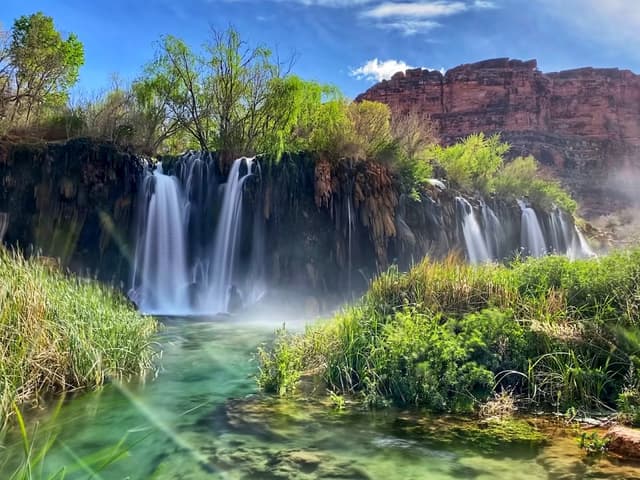
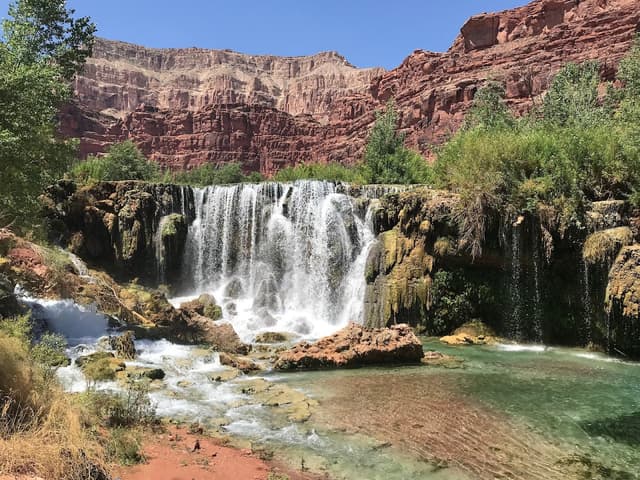

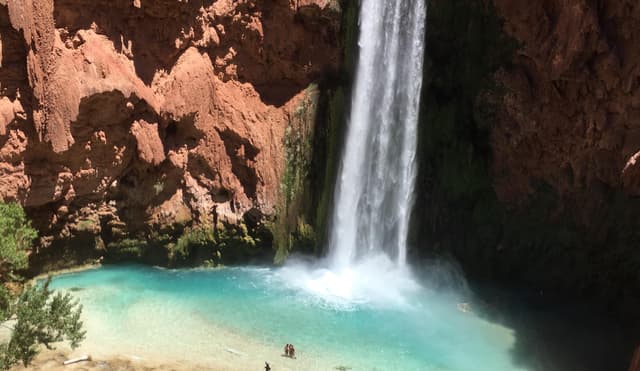
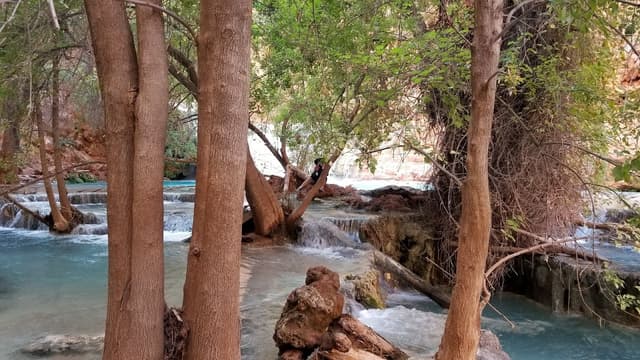
The Confluence
The Confluence is one of the coolest places ever, so if you have enough energy and time on your trip, I highly recommend hiking to it from the Havasupai Campground. The Confluence is where the Havasu Creek and Colorado River meet. The bright blue waters from Havasua Creek and then the dark, murky waters of the Colorado dramatically meet, yet stay separated, resulting in an interesting mix of colors.
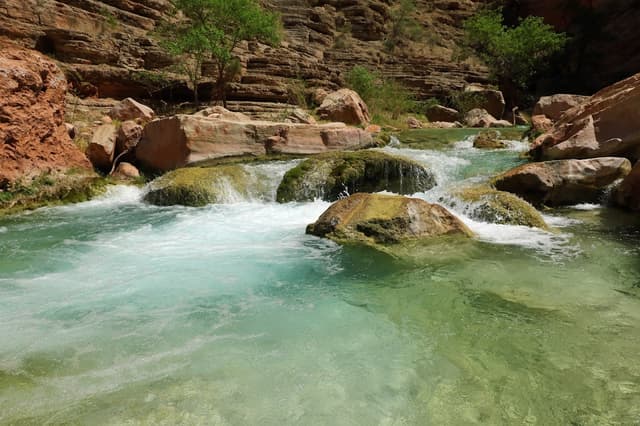
Packing List
Hiking to Havasupai was my first backpacking trip ever, so it is definitely doable as a first-timer backpacker, but I would recommend having several 10+ mile hikes under your belt before doing this to become acclimated to the mileage. Temperatures can reach 115+ degrees during the day depending on the time of year, so it is important know your limits.
I overpacked way too much this trip, and I wish I had less weight to carry. Aside from your typical backpacking gear (tent, sleeping bag, sleeping pad, etc.) here’s what I recommend bringing:
-A waterproof case for your phone
- A good pair of water shoes, especially if you’re planning to hike to the Confluence. The areas surrounding the waterfalls are super rocky, so having water shoes is helpful to avoid destroying your bare feet.
- Bathing suit (just one is fine)
- Quick dry towel
- Good quality, wool hiking socks
- Headlamp
- Trekking poles
- Sunscreen
- Hat
- Download Offline Maps of Supai and the surrounding area. You likely won’t need this, but I think having the map available gives peace of mind.
Rules & Policies
The Havasupai Reservation is federal land. Regardless of state laws, all drugs listed in the Schedule of Controlled Substances, Title 21 C.F.R. Part 1308 that are federally prohibited are illegal on the Havasupai Reservation, including marijuana in any amount.
Possession, distribution, or consumption of alcohol anywhere within the boundaries of the Havasupai Reservation (which also includes the Hilltop Trailhead parking area) is a Tribal and Federal crime, punishable by up to one year of imprisonment.
I’ve listed below the rules you’ll need to abide by while on your trip, but please take these seriously! They are stictly enforced!
- Alcohol is NOT permitted.
- Littering is NOT permitted.
- Drones are NOT permitted.
- Campfires are NOT permitted.
- Diving/jumping is NOT permitted.
- Taking photos of Havasupai people or property is NOT permitted.
- Camping is NOT permitted anywhere other than in the actual Campground.
- The following are NOT permitted: alcohol, drugs, smoking, drones, amplified music, littering, nudity, jumping, diving, climbing, fishing, hunting, horses, dogs, pets, animals, wagons, carts, bikes, vehicles, fires, fireworks, firearms, weapons, water guns, boats, rafts, kayaks, paddle boards, inner tubes, pool floats, pool toys, styrofoam, filming or photography for commercial purposes, taking photos of Havasupai people or property, and anything else that may be hazardous or discourteous. Proper attire is required, please dress appropriately. Gas canister backpacking cooking stoves are ok, but all other types of flame/fire are NOT permitted.
Is It Worth It?
100% YES! Havasupai is such an amazing, bucket-list place and I am so happy I did it! There’s no where else like it. Also to be able to say you completed this hike is such a great accomplishment. I highly recommend doing it at least once in your life!
The home for unique & authentic travel

